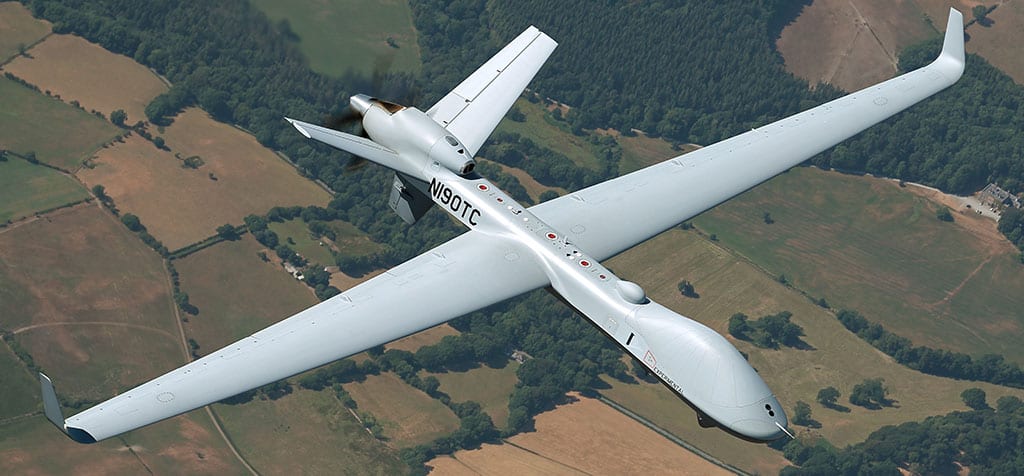
A General Atomics MQ-9B SkyGuardian in flight. (GA-ASI)
The FAA has been trying to streamline drone processes: Low-altitude authorization and notification capability speeds up airspace applications. May’s updated guidance removes exceptions for hobby drones. Now, the agency is pushing Part 91 of the Code of Federal Regulations, Title 14, which deals with general flight rules, to handle beyond-visual-line-of-sight (BVLOS) operations.
An application for a certificate of waiver or authorization (COA) for Part 91 operations can be requested as a public operator — with accompanying letter stating such — or a civil operator, accompanied by Part 135 or Section 44807 certification.
There is, however, no overlap between Part 91 and Part 107 operation, according to the FAA’s John Page, an ATC specialist from the agency’s emerging technologies office. Speaking at the FAA and AUVSI’s joint UAS Symposium in Baltimore, Page detailed the process for getting a 91.113 waiver request approved.
While the Part 91 waiver process is still bespoke and case-by-case, it starts simply enough: Simply send an email to [email protected] expressing interest. The agency will ask for certain documents and, upon their receipt, will set up a conversation either over the phone or in person. That begins a series of back-and-forths between the applicant and the FAA’a review group, which has stakeholders from various offices, to ensure that the agency has all the information it needs. Ultimately, the FAA will provide a ruling or let the applicant know about any adjustments before it can move forward.
If the proposed operation is unique, the FAA will need to conduct a risk-mitigation survey. If it is similar to a previously completed operation, the organization can use the results from that survey. Over time, that process should get smoother.
“The FAA cannot independently solve BVLOS for industry and the solution must be developed collaboratively,” Page said.
To that end, several companies are already working to do just said. Drone manufacturer General Atomics is one such company. It partnered with NASA last year to do flights out of California with no chase plane using detect-and-avoid technology as an alternate means of complying with the see-and-avoid requirement.
The company went through the 91.113 waiver process exactly as Page described, said Joey Neptune, a General Atomics engineer.
“We are on the precipice of a new industry and there are a lot of things that are changing,” Neptune said. “The standards really aren’t developed yet because of all the emerging techs that are coming out with UAS as a whole.”

An FAA slide showing Part 107 requirements and ways they might be adapted for Part 91. (FAA)
According to Paul Albuquerque from the new entrants section of the FAA’s flight standards office, the FAA needs industry and independent standards groups such as the Radio Technical Commission for Aeronautics (RTCA) are a good place to start.
One of the challenges is that Part 107 requirements were written exclusively with a remote pilot in command who can see the vehicle in mind, and translating them to BVLOS creates problems. Because of the level of adoption necessary, working collaboratively from the start on the standards might make the entire process safer and more efficient.